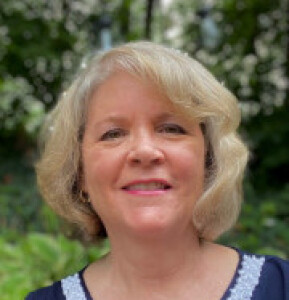Jean-Marie Galing's collections
Time
<p>The theme of TIME can be explored in art using key concepts throughout the semester or year. Explore various concepts related to the idea of TIME by playing the Connections Card Game. The mind maps made after playing the game can be used as a reference throughout the course. </p>
<p>Teacher Preparation:</p>
<ul><li>Download and print images on card stock (resource attached to this collection). Create multiple sets for small groups to play the game.</li><li>Print Key Concept Cards (resource attached to this collection)</li></ul><p>Student Activity:</p>
<ul><li>Take turns choosing a card and connecting it to a key concept by placing it near an appropriate Concept Card. </li><li>Defend choice with evidence in the image.</li><li>After all cards have been played, students make inferences about how people experience, measure or represent time. </li><li><span></span> Small groups collaborate to draw a mind map to illustrate their ideas. </li><li>Present maps in a "Carousel Interview." One group member stays with the mind map to answer questions; other group members visit tables to explore mind maps and ask questions.</li><li>Return to original group. Encapsulate overarching ideas and record them on your group's mind map.</li></ul>
 Jean-Marie Galing
Jean-Marie Galing
24
Celebrate Good Times
<p>Images support second grade collage lesson. Choose an image that connects to a poem read to students (from <em>Celebrate American in Poetry in Art,</em> edited by Nora Panzer). Use questioning to describe and analyze the artwork: </p>
<ul><li>"What do you see?" </li><li>"What is happening here? </li><li>"What clues make you think that?"</li><li> "What else is happening in this image?" </li></ul>
<p>Celebration can take forms other than parades, dances, or parties. A portrait can celebrate the dignity of a worker <em>(Lunch at the Grill)</em> or someone who stood up for freedom (Harriet Tubman in <em>I Go to Prepare a Place for You</em>), or the birth of a new baby (<em>Family</em> by Romare Bearden).</p>
<p>Ask students to take a minute to think of a personal experience that this image reminds them of, then turn to a partner and share. This prepares them for the next step, which is to visualize a favorite community celebration and sketch in preparation for making a collage.</p>
 Jean-Marie Galing
Jean-Marie Galing
11
Figures of Interest
<p>People from different times and places have created human figures in clay. Look at some of these figures and consider:</p>
<p></p>
<ul><li>What do you know about the figure? What do you see that makes you think that?</li><li>How did the artist show the interests of the figure?</li><li>What did the artist do to make the figure visually interesting?</li><li>For whom might this artwork be special?</li></ul>
<p>If you were to create a self-portrait in clay, what clues would you add to tell others about yourself? What special object might you include?</p>
<p></p>
 Jean-Marie Galing
Jean-Marie Galing
13
Evocative Memories
<p>Memories can evoke strong feelings and inspire artists to tell stories in their art. Look at a selected image with a partner or table group and discuss:</p>
<p></p>
<ul><li>What is the story?</li><li>How do you think the person or people feel about this experience?</li><li>What do you see that makes you think they feel that way?</li><li>Have you ever had the same feeling?</li></ul><p></p>
 Jean-Marie Galing
Jean-Marie Galing
13
Community Groups
<p>Images support the second grade "Out and About" lesson. </p>
 Jean-Marie Galing
Jean-Marie Galing
15
Medallions
<p>Work with a partner or partners to analyze each object:</p>
<ul><li>What do you think the symbols mean?</li><li>Are there words that help describe it?</li><li>What patterns can you find?</li><li>Does the design show bilateral symmetry, radial symmetry, or is it asymmetrical?</li></ul><p>ART MAKING CHALLENGE: Design a medallion to commemorate something important to you. Some possibilities:</p><p></p><ul><li>An accomplishment</li><li>A special event you participated in</li><li>A family tradition</li><li>A personal interest</li></ul><p>The final artwork could be a drawing, painting, collage, clay slab, or foil repousse.</p><p></p>
 Jean-Marie Galing
Jean-Marie Galing
28
Alma Thomas: Collection of Colors
<p>Images support discussion of art portfolios and collections with elementary students. </p>
<p>See - Think - Wonder</p>
<p>1. What do you see?</p>
<p>2. What does it make you think of?</p>
<p>3. What do you wonder about them, or what would you like to know more about these artworks?</p>
<p>Further discussion questions:</p>
<ul><li>What do these artworks have in common?</li><li>Do you think they were created by the same artist?</li><li>Why might an artist develop a collection or portfolio of their work?</li><li>If you collect or make things, how would you like to share it with others?</li></ul>
 Jean-Marie Galing
Jean-Marie Galing
12
Sculptures by Sol LeWitt
<p>What geometric shapes/forms do you see?</p>
<p></p>
<p>How does the artist create a relationship between form and space?</p>
<p>How do the parts interact or intersect?</p>
<p></p>
<p></p>
 Jean-Marie Galing
Jean-Marie Galing
5
Contemporary & Historic Architecture
<p>How does the past influence the present and future? Compare forms in contemporary architecture with those of buildings from ancient and Renaissance times. What similarities can you find? </p>
 Jean-Marie Galing
Jean-Marie Galing
32



